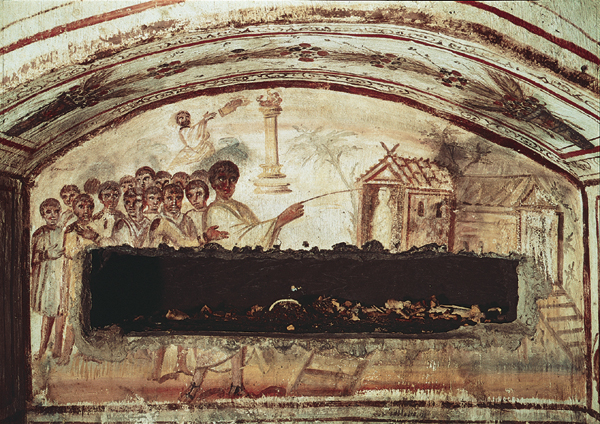Image Details

Scala/Art Resource, NY
“Lazarus, come out!” commands Jesus (center) when he arrives at his cherished follower’s tomb, two days after Lazarus’s death (John 11:43). In this fourth-century painting from the Via Latina catacombs in Rome, Lazarus astonishes the onlooking witnesses by emerging from a booth-like tomb with “his hands and feet bound with strips of cloth, and his face wrapped in a cloth,” as described in John 11:44. Above the Lazarus scene appears the column of fire that guided the Israelites through the desert at night (Exodus 13:21) and Moses receiving the Law (Exodus 20 and Deuteronomy 5). The painted plaster surface originally covered a burial niche. In the Middle Ages, plunderers broke through the painting, leaving the burial niche containing bones exposed.
Early Christian writers employed the Lazarus story as an argument for the resurrection of bodies as well as souls at the end of time. While Paul stated that “flesh and blood cannot inherit the kingdom of God” (1 Corinthians 15:50), the second-century bishop Irenaeus of Lyons wrote that the raising of Lazarus proves that the dead would rise “at the last trumpet” with their decomposed flesh restored in glory.
